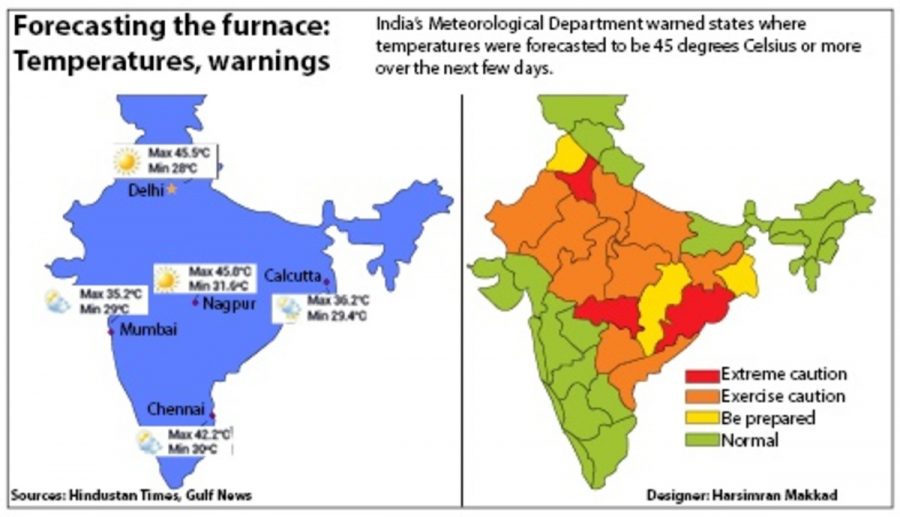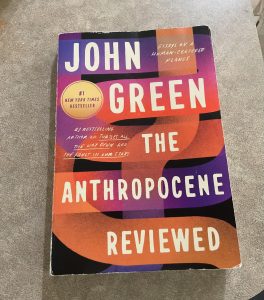Too hot for summer
Heat wave strikes, killing over 1,000 people, melting roads
In India, May is usually one of the hottest months of the year. However, the India Meteorological Department has said that this is the most severe stretch recorded in over a decade. Heat warnings have been issued throughout the country.
May 28, 2015
Sizzling sun, blistering temperatures. This is what India has experienced in recent weeks, scorched by a massive heat wave that has claimed the lives of more than 1,100 people within the past week and sent many scrambling for any available shade.
According to CNN, the worst-hit areas are the southeastern state of Andhra Pradesh, where 852 people have died so far, and its neighboring state Telengana, where 226 have died. Temperatures there have reached between 45 and 48 degrees Celsius (113 and 118 degrees Fahrenheit).
The homeless, elderly, and construction workers made up a majority of the fatalities, falling victim to heat stroke and dehydration.
Although hot conditions should not cause so many deaths, the affected areas in India are humid, worsening the stress of the excessive heat.
“The prime [reason behind these deaths] is what is called climatic acclimatization. This year the temperature changed suddenly. This disturbs the defense mechanism of the body,” Aftab Ahmad, internal medicine expert, told The Times of India.
“The elderly, those involved in physical labor, young children and pregnant women easily suffer from sunstroke if there is poor climatic acclimatization. Other reasons could be delay in availability of medical facilities, no access to drinking water, severe dehydration, and electrolyte imbalance.”
Of the country’s 1.2 billion people, only one-third have access to electricity. This means that for millions, the stifling heat will continue without relief.
“For those who do have electricity, power has dipped in and out as extra demand to run fans and air conditioning has put pressure on the system,” CNN Mumbai correspondent Mallika Kapur reported.
“Many people without ways to cool their homes are seeking shelter in shops and malls – anything to escape the heat.”
Experts have warned that no respite to the heat wave would lead to large-scale power outages throughout parts of northern India, reminiscent of the 2012 blackout that affected nearly 700 million people.
New Delhi, the nation’s capital, recorded a maximum temperature of 45 degrees Celsius, melting roads and zebra crossings and turning the white-striped walk to pool into black.
State authorities have been advising people to stay indoors, drink plenty of fluids, and avoid protein-heavy meals and alcohol.
Governments have asked people to wear light clothes and not to step out of their houses between 9 a.m. and 4 p.m. Water camps have been set up to provide drinking water to people.
Indians anticipate the arrival of the annual monsoon rains, which are expected to break the sweltering temperatures. However, the rains are expected to arrive in one week, hitting the coastline of the southern state Kerala on May 30.
It will likely take weeks before it reaches the northern parts of the country where extreme heat and dry winds have caused severe dehydration.
“I know that many people have relatives living in India and some are even planning to visit them over summer break. I hope the heat wave will have blown over by then, especially with the monsoon coming,” freshman Shruti Mishra said.







